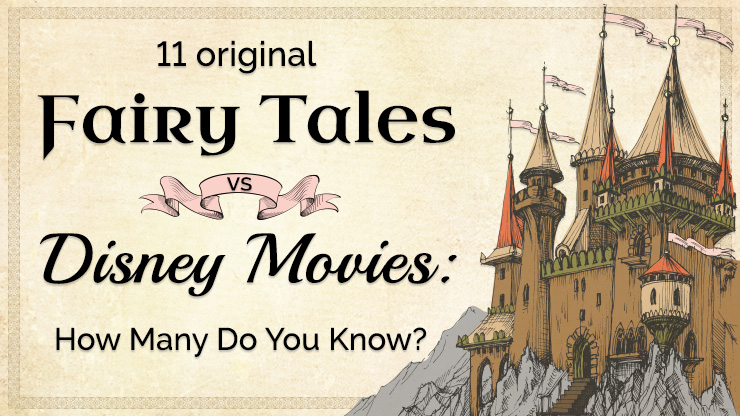Disney is well known for the movies and shorts they've been making for more than a century. Many of them are based on previous works from the Brothers Grimm and Hans Christian Andersen, among others. Disney also draws from well-known myths and tales from oral traditions. However, these are not always the most accurate or faithful adaptations. If we've managed to pique your curiosity, keep reading to see a handful of Disney movies versus the original tales. How many of these stories are you familiar with?
1. Beauty and the Beast Could Have Ended Badly, but It Didn't
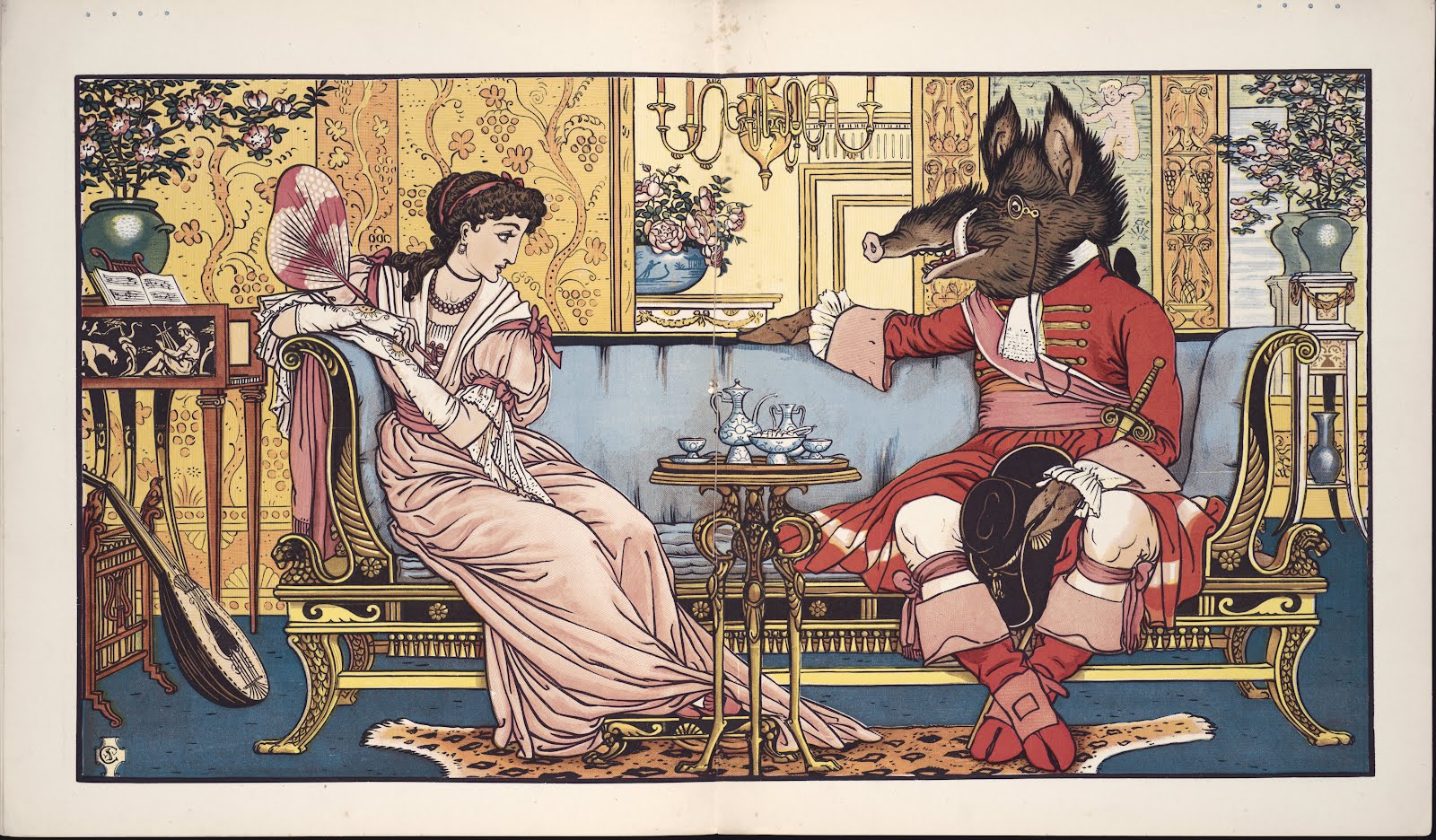
[Source: Walter Crane/BranchCollective.org]
Beauty and the Beast is a well-known Disney classic, but did you know that the tale has its roots in French literature? French novelist Gabrielle-Suzanne Barbot de Villeneuve is credited as the earliest-known author of the story, but it was abridged several times in order to be a shorter and more appealing fairy tale. A common trait of fairy tale stories, many of the characters didn’t have names. In this story, Belle is only referred to as “Beauty”, which is actually her nickname. Her father is simply referred to as a merchant, and she has a number of unnamed siblings. (And what about the other characters that Disney introduced to the story, like Gaston and all of the servants transformed into household items? They never existed in the original story.)
The merchant gets lost and stays in the Beast’s home—and quite comfortably! He makes himself at home and eats and drinks until he leaves, all without meeting the Beast. That is, until he picks a rose from his garden! The Beast tells the merchant that he will die for taking one, but they end up settling with the merchant going home and asking if one of his daughters would die in his stead. (If they refuse, the merchant was to come back to the Beast in three months to die.) In the end, Beauty volunteers to take her father’s place because he picked the rose for her, but the Beast can’t bring himself to kill her. Instead, she comes to love him dearly and he transforms back into a Prince.
2. Frozen Has Little in Common with Its Source Material
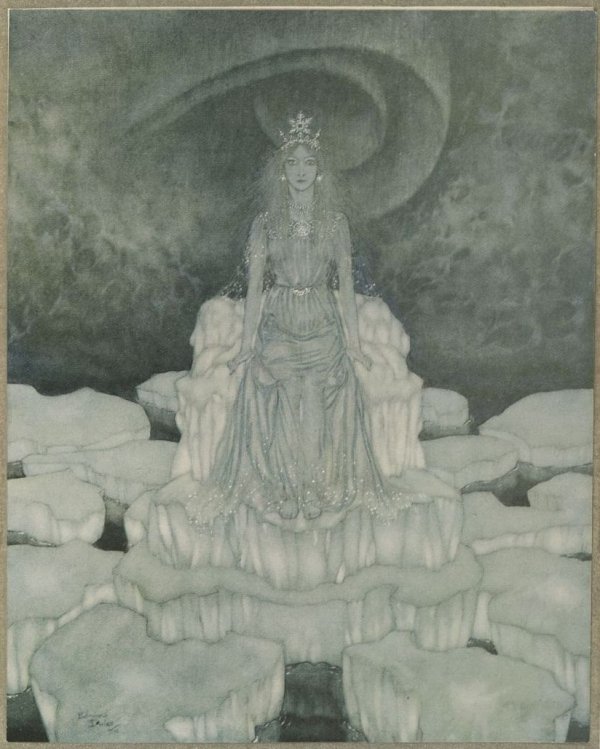
[Source: Edmund Dulac/Gutenberg.org]
Disney’s Frozen is very loosely based on The Snow Queen by author Hans Christian Andersen. None of the Disney characters are mentioned in the original fairy tale, although the tale does have a Snow Queen with her own ice palace similar to Elsa. (However, Elsa is much, much nicer than her!) The original story centers on the characters Kai and Gerda, a little boy and girl that are good friends. Kai gets shards of an enchanted mirror embedded into his eyes and heart which make him see the world with a very cold and distant point of view. On top of this, Kai also gets whisked away by the Snow Queen.
The town assumes that he fell into the river and died, but Gerda doesn’t give up and she keeps looking for him. Gerda goes through a series of adventures, but she eventually makes her way to the Snow Queen’s palace, where she finds Kai. He remains under the Snow Queen’s spell, but she gives him a kiss that releases him from the evil Queen’s spell. They leave and make their way home, and they realize that they have turned into adults. (Gerda’s adventures must have spanned the course of a few years!) It’s summer when they get home, and we presume that they had their happily ever after.
3. Cinderella Doesn't Need a Fairy Godmother

[Source: Edmund Dulac/ClassicalMPR.org]
One could argue that Cinderella is the neediest of the Disney Princesses. Sure her home situation isn’t ideal, but she cries until her Fairy Godmother appears, and her Fairy Godmother proceeds to use her magic to give her everything she needs. With Cinderella’s uncanny good looks and the magical assist, she charms Prince Charming and they live happily ever after. However, the original stories of Cinderella went through a few adaptations until they fell into the hands of the Grimm Fairy Tales. In keeping with other fairy tale norms, Cinderella is the only named character in the story. (Cinderella is also only a nickname, so we don’t know her birth name.) She is once again treated like a household servant by her stepmother and sisters. However, instead of consulting her Fairy Godmother, Cinderella plants a twig by her mother’s grave, and she weeps over it until it turns into a tree. She clearly has her own magical powers!
Cinderella frequently weeps and prays by this tree, which grants whatever items she may want. Eventually, she catches wind of a festival that is being held for the Prince, which she desires to attend. It spans three days, and over the course of these days, she calls on birds to aid her. The birds also do her chores and bring her shoes and dresses of increasing beauty that she wears to the festival. The Prince wishes to escort her home each day, but she manages to disappear—and we’re not entirely sure why. By the third day, he gets wise, and he actually coats the stairs with pitch so her shoes get stuck when she tries to leave. (She simply leaves them behind due to the inconvenience.) The Prince then travels to find the owner of the shoe, and Cinderella’s sisters famously cut off parts of their feet in an attempt to wear the shoe. They get called out for it because of the blood on the shoe, but eventually, everyone finds out that the shoe belongs to Cinderella. (It’s not actually a glass slipper either, but it’s made of gold!) When the Prince does find Cinderella, he immediately puts her on his horse and rides off with her. Cinderella and the Prince get married, but at the ceremony, pigeons arrive and peck out the eyes of her stepsisters. While it isn’t mentioned in the story, with Cinderella’s affinity for birds, we wonder if she had anything to do with that.
4. Mulan’s Fellow Soldiers Were Fooled by Her for a Decade
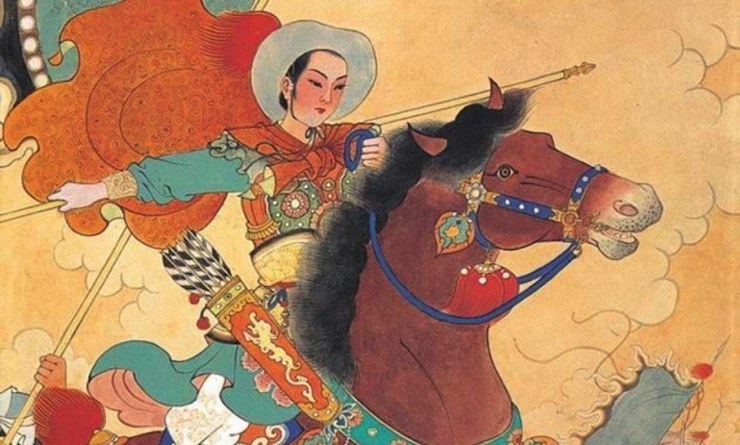
[Source: Tor.com]
There are several versions of the original Mulan story, as it is a very old tale with roots in oral traditions. (It is also up for debate as to whether she’s a real person or not, but a lot can happen to a story that started in the 400s or 500s!) Disney isn’t that far off the tracks in regards to this tale, seeing as she did step in for her father and take his armor because she felt that he was too old to be fighting. However, Mulan had been taught to fight at home, so she blended in perfectly with the rest of the warriors when she joined the army. Mulan actually fought with them for over ten years, and by the sound of it, she didn't get caught until the very end, and she wasn't hiding at that point. You go, girl!
The original tales have several different endings, but some of them end in tragedy. One such tale has her elderly father die while she was at war, and her mother remarries. Mulan is later approached by the Emperor to become his concubine, and she decides that it is in her best interest to die rather than to live as a trophy wife. However, other stories end more favorably, with her simply riding home on a camel or looking forward to getting married after coming home from the war.
5. Hercules was at Odds with Hera, Not Hades
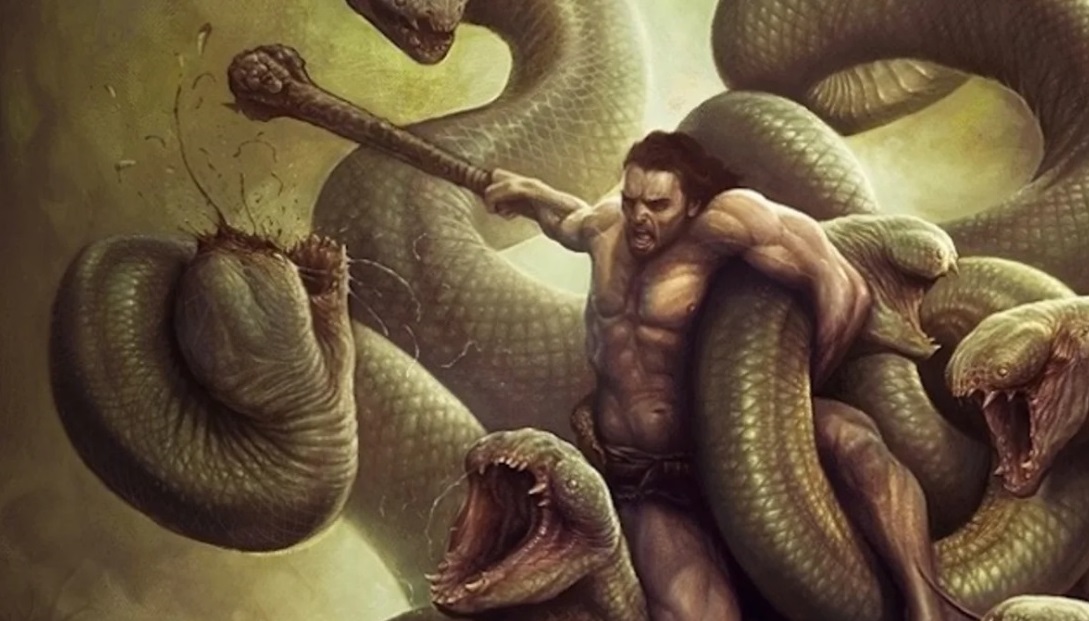
[Source: Ken Barthelmey/io9.gizmodo.com]
As you probably know, Greek myths are not exactly child-friendly. Hercules was actually the son of Zeus and a mortal woman—not Zeus and Hera like in the Disney movie—because Zeus is the epitome of unfaithfulness. (Try getting that past the Disney censors!) This made his wife, Hera, understandably angry. Throughout Hercules’s life, Hera curses him with fits of madness and he kills people he would never otherwise dream of hurting. In order to atone for his sins, Hercules goes through a series of 12 trials, and one other time he sells himself into slavery per the oracle’s advice. (There were supposed to be 10 trials, but he technically cheated on 2 so it went to 12.)
In the end, he helps to conquer Troy, wins a war and successfully defends Mt. Olympus from the Titans. He has some more adventures and gets married again. After even more adventures, he takes another woman and his wife gets jealous, so she uses what she thought was a love potion and soaks Hercules’ shirt in it. But it was actually poisonous blood from a centaur that Hercules killed. Oops! The poison seeps into his skin and burns Hercules, and his wife feels so bad about it that she kills herself. Hercules realizes that he is slowly dying from the poison, so he makes his own funeral pyre and burns himself to death upon it. Sorry folks, but he doesn’t live happily ever after with Megara. Even if the Disney tale of Hercules is wildly different than the original, it has a killer soundtrack!
6. The Little Mermaid was Warned of Her Terrible Fate

[Source: Edmund Dulac/Classic Literature Library]
As you're probably guessing by now, The Little Mermaid by Hans Christian Andersen is anything but a happy fairy tale with a satisfying ending, which is in stark contrast to the Disney version. The little mermaid also has no name in Andersen’s story, similar to other fairy tales. The mermaids are actually allowed to visit the surface as much as they like when they reach fifteen years of age, and the little mermaid manages to save a drowning prince on one such trip. She gets into a very deep conversation with her grandmother about humans, mermaids and mortality, and finds out that while humans live shorter lives, they have souls that give them an eternal afterlife. Mermaids, however, live up to 300 years and simply dissolve into sea foam, ceasing to exist. After hearing this, the little mermaid wants very much to become a human so that she can have a soul. She is desperate enough that she visits a sea witch. The witch actually seems kinder than Disney’s Ursula because she gives the mermaid several chances to back out and tells her up front that she is destined to a life of misery and pain, but even this does not deter the girl.
It is only at the very end of their conversation that the sea witch asks for Ariel’s voice as payment. After giving Ariel the potion that will make her human, she cuts out the poor girl’s tongue—it certainly takes away her voice along with her ability to taste. Ouch! She swims to the surface and takes the potion while sitting on the palace steps, where she is found and taken in by the prince that she had saved. He does come to love her, but he is betrothed to the daughter of a neighboring king like many royals were in those days. Upon meeting the princess he was to marry, he mistakes her as the young woman that saved him from the sea, and any hopes that Ariel had left were crushed. On the wedding boat, Ariel despairs and looks into the sea to find her sisters, who are now bald after exchanging their hair for a knife from the sea witch. With the blade, she has the option to kill the prince before the sun rises, and with his blood on her legs, she will turn into a mermaid once again. Ariel takes the knife and approaches the prince, but she sees him happily asleep with his new bride and she cannot bear to kill him. Instead, she tosses the knife overboard and hurls herself into the sea, dissolving into sea foam. The story doesn’t quite end here, either. Ariel rises out of the foam and finds out that she has become a “daughter of the air”. They do not have souls either, but they can eventually earn a soul through their good deeds after 300 years. (We guess you could say that in a roundabout way, the little mermaid would eventually get what she ultimately wanted.)
7. Snow White Needs to Know About Stranger Danger
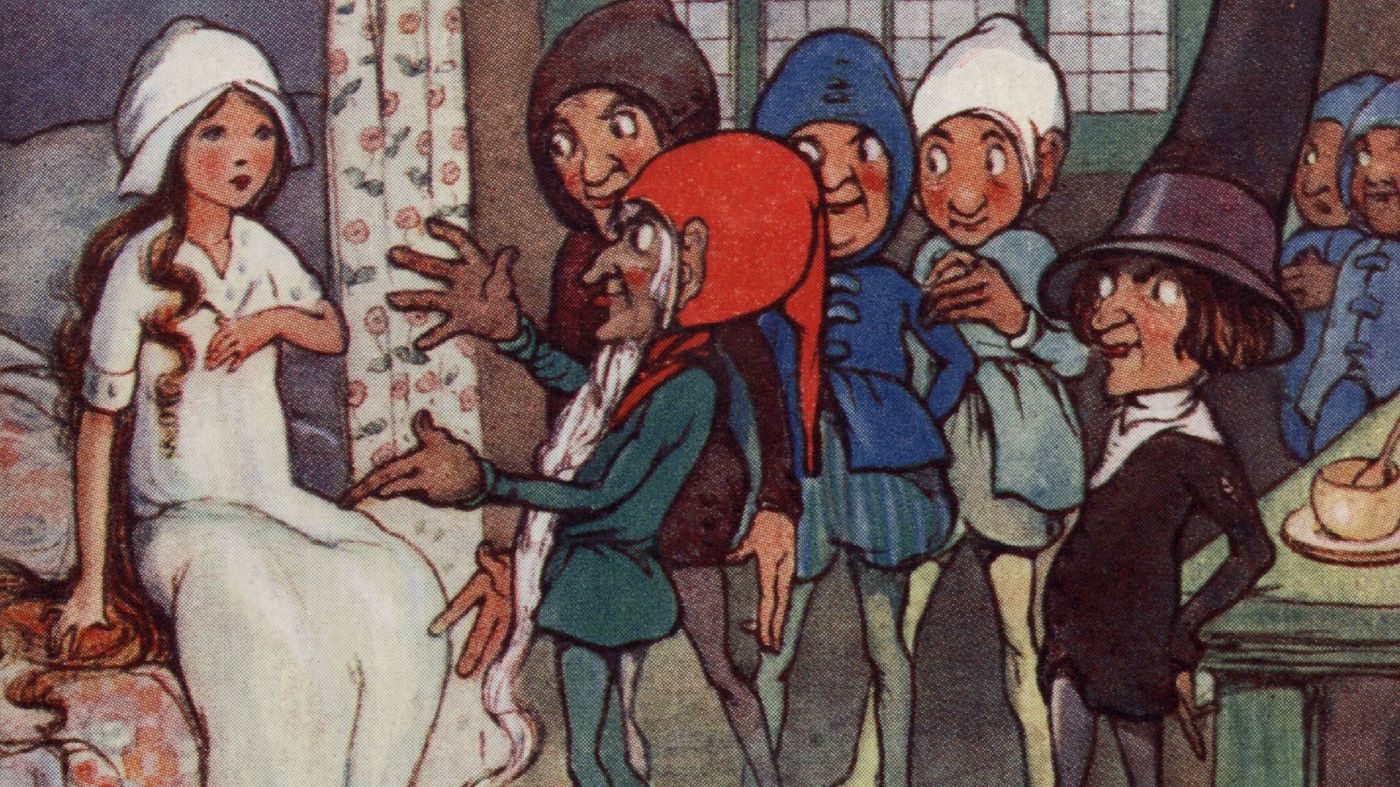
[Source: Hulton Archive/Getty Images/NPR.org]
Snow White and the Seven Dwarfs is another Disney movie that was adapted from the Grimm Brothers’ fairy tales. While the Disney version never mentions a king, the original tale says that her original mother died and the king took another wife—the evil queen, now Snow White’s stepmother. After being told by the magic mirror that Snow White is now more beautiful than she is, the evil queen asks a huntsman to take her into the woods and to bring back Snow White’s lungs and liver. A little more gruesome than asking for her heart! The huntsman lets her go into the woods as he cannot bear to kill Snow White, so instead he brings the queen the lungs and liver of a wild boar. Which she proceeds to eat. (Apparently, the evil queen has cannibalistic tendencies. Yikes.) Unfortunately, the queen finds out via her mirror that Snow White is still alive and living with seven dwarfs in the mountains. The evil queen disguises herself on several occasions and attempts to kill Snow White with a tightly laced corset, a poisoned comb and finally a poisoned apple. The dwarfs had managed to revive her on the previous attempts, but they could not bring her back after the poisoned apple, so they made her a glass coffin because they felt that she was too beautiful to bury underground.
Sometime later, a prince comes across the dwarfs’ home and asks to stay for the night. Upon seeing Snow White’s figure in the coffin, he pleads with the dwarfs until they allow him to take it home. (It's a little creepy that he wants this dead girl that badly, but she's apparently so pretty that he just can't help himself.) His bumbling servants carry it, but when they stumble while carrying it, somehow the piece of poisoned apple stuck in Snow White’s throat gets dislodged and she comes back to life. (Maybe the dwarfs should have tried the Heimlich maneuver instead of washing her with water and wine, loosening her corset and combing her hair.) Snow White and the prince get married, and they even invite the evil stepmother queen. She attends but she is very scared, as she should be—they bring out a pair of iron shoes and heat them in burning coals. They then force the evil queen to wear the shoes and dance until she dies. And that is how the story ends. Let’s just say that Disney’s ending was much more kid-friendly, and the newly married couple has poor taste in wedding entertainment.
8. Rapunzel was Named After Her Mom's Pregnancy Cravings
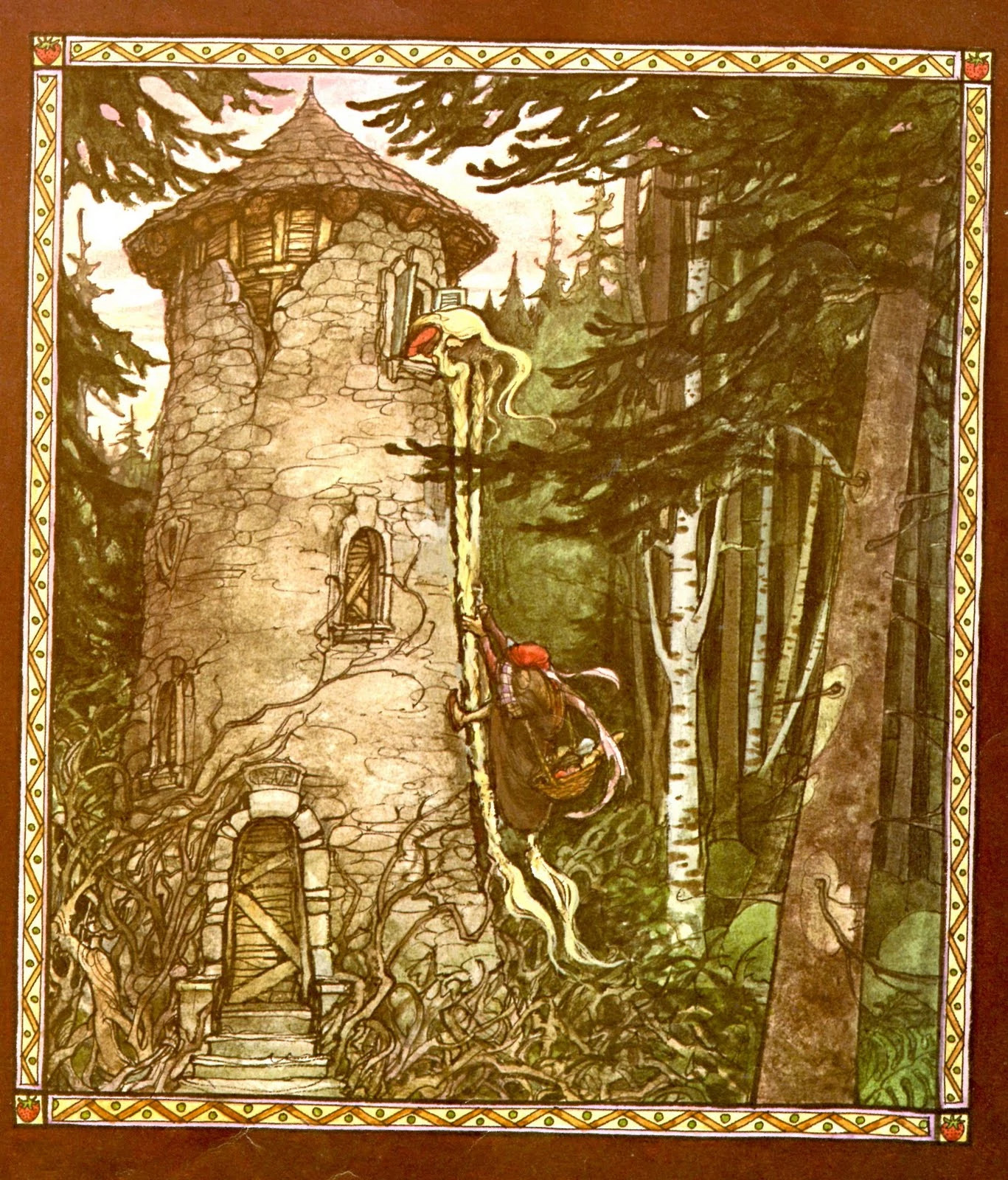
[Source: fairytale.fandom.com]
The tale of Rapunzel is one of the few stories adapted by Disney that doesn't share a name similar to its source material. (The Disney movie is called Tangled.) Rapunzel is yet another story made famous by the Brothers Grimm. In the Grimm tales, Rapunzel’s parents aren’t royal at all. In a weird bout of pregnancy cravings, the mom-to-be desires to eat the rapunzel plants from a neighboring sorceress’s garden. The father doesn’t bother asking the sorceress so he climbs the wall and steals rapunzel plants for his wife to eat. He gets caught by the sorceress and after explaining himself, she allows him to take her plants if he and his wife give up their child to the sorceress. He says yes, apparently. The little girl is born and the sorceress names her Rapunzel and takes her away. It isn’t until the girl reaches twelve years old that the sorceress locks her in a tower, which has no door or stairs, but it does have a room and window at the very top.
The sorceress gets in and out of Rapunzel's room by climbing her hair, which a prince happens to witness. He decides that he wants to see Rapunzel for himself, so he manages to convince her to let down her hair-rope while the sorceress is away. They meet on several occasions, and Rapunzel falls in love. She asks him to bring strands of silk so that she can make an actual-rope ladder long enough to escape the tower. (Why they didn't just cut her hair and climb out or have the prince bring a long enough rope, we'll never know.) Unfortunately, Rapunzel blows her cover one day by asking the sorceress why she is more difficult to pull into the tower than the young prince. (Evil women dislike being less than drop-dead gorgeous in fairy tales, so the sorceress was not thrilled at this roundabout way of being called fat.) In retaliation, she the sorceress cuts off Rapunzel’s hair and hides her in the wilderness.
The sorceress then waits for the prince and lets down Rapunzel’s hair, allowing him to climb into the tower. He’s utterly shocked and unhappy when the sorceress tells him that he won’t ever see Rapunzel again, so he throws himself out of the tower. While he didn’t die, he is severely hurt and the thorns he landed in poked out both of his eyes. He blindly wanders the wilderness and eats grass and roots for several years, but eventually he does come upon Rapunzel, still out there living in the wilderness. Rapunzel had a set of twins while he was away—probably due to his visiting her in the tower. Poor Rapunzel cries upon seeing him in such a state, and her tears magically enable him to see again when they roll into his eyes. He leaves and takes her to his kingdom with her, where they do get their belated happily ever after.
9. Sleeping Beauty is Oddly Okay with Being the Third Wheel

[Source: Medievalists.net]
Similar to other fairy tales, Sleeping Beauty had several adaptations, but it is famous for being another story in the Grimm Brothers fairy tale books. However, one of the earliest and most disturbing versions of this story, Sun, Moon, and Talia, is written by Italian author Giambattista Basile. (Let’s just say that we’re thankful that the Grimm Brothers’ Sleeping Beauty is much kinder to Sleeping Beauty and closer to the Disney version.) The disturbing original story by Basile has a king that asks some astrologers to predict the fate of his daughter, Talia. After looking at her future, they find out that Talia will come into danger with a piece of flax. In an effort to escape her fate, the king bans flax, hemp and other materials from entering the castle. Unfortunately, Talia comes across a woman at her spindle. She gets a piece of flax embedded under her nail and falls down dead. (Splinters under the nail are no joke, but dying from one seems rather preposterous.)
Talia’s father was distraught by this news, and he had her taken to rest at one of his country mansions. Sometime later, a king from another territory had his hunting falcon fly into the house, and while retrieving it he was absolutely smitten with the puzzlingly sleeping or deceased woman. He failed to wake her, so he instead “gathered the fruits of love”. The king then went on his merry way to his own land, although the story does say that he thought about the incident from time to time. Nine months later, the enchanted Talia has a set of twins, and the forest fairies help to raise them in the mother’s unconscious state. One day when the babies were eating they sucked on her finger and managed to remove the flax from under her fingernail. Talia woke up incredibly confused, but she immediately fell in love with her twins and continued to care for them.
The neighbor-king later returned to find her awake and with a set of twins, which were quite obviously his. He confessed everything to Talia, and for some reason she decides that she loves him. The children are named Sun and Moon, and he goes home from his “hunting trip”. Naturally, his queen gets suspicious of these "hunting trips" and the fact that he mumbles about Talia, Sun and Moon. The queen commands their secretary to uncover the secret, which he does. She invites the children to visit and instructs her chef to cook them, but the cook hides the twins and makes several lamb dishes instead. The queen also attempts to burn Talia but eventually the truth is discovered and the king burns his queen and secretary instead. (The cook is spared because he did not cook the twins as the queen had intended.) Talia then lives in the palace with the king and her two children, where they presumably lead happy lives.
10. The Frog Prince's Princess Could Learn a Thing or Two From Tiana
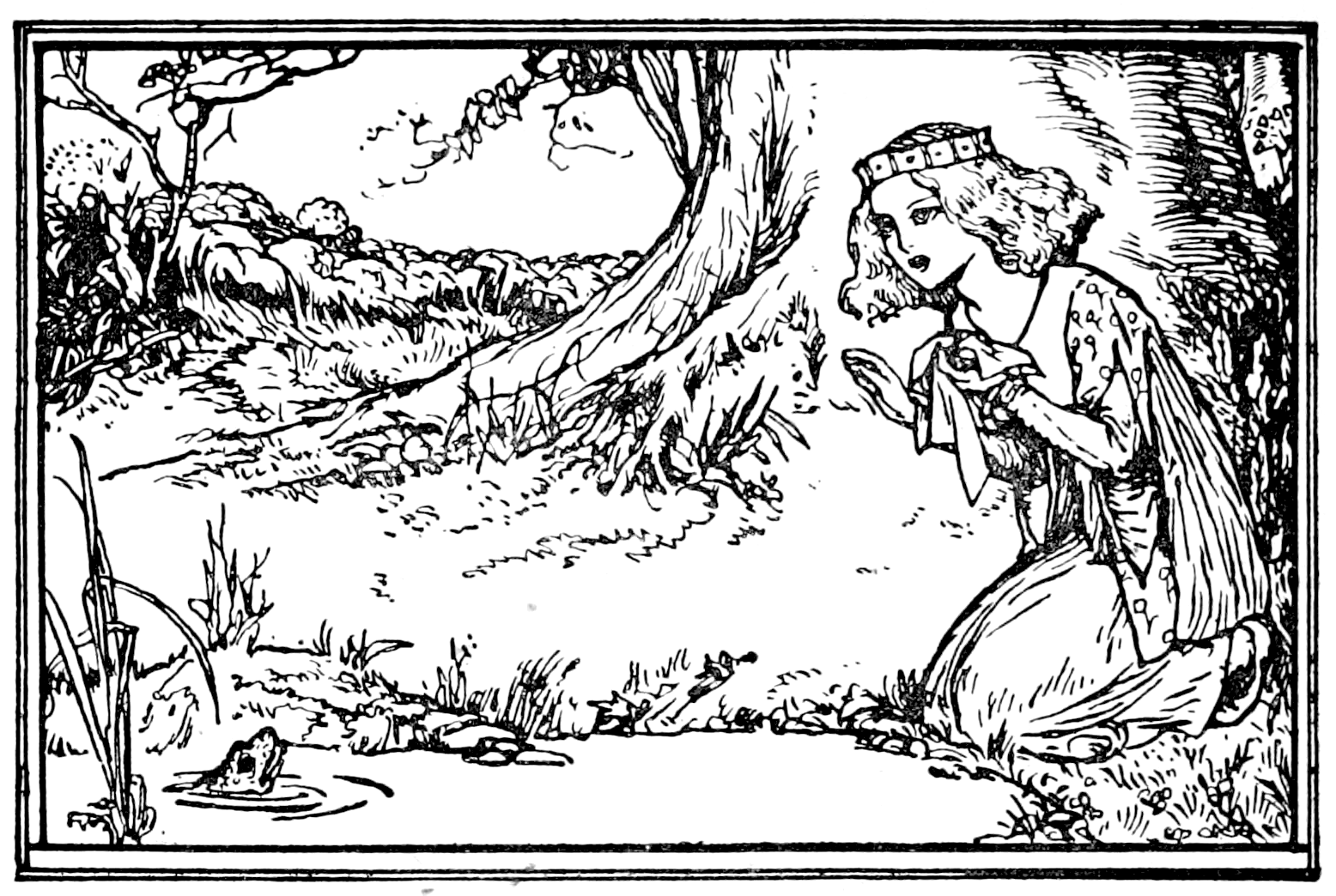
[Source: Robert Anning Bell/Literature WIki]
Disney’s The Princess and the Frog and The Frog Prince by the Grimm brothers have little in common, but both stories are interesting in their own right. The Grimm version begins with a princess that is also the king’s youngest daughter. (There is definitely a recurring theme with the youngest daughter in fairy tales.) None of the characters have names save for one, and we do not know the age of the princess. Naturally, the youngest daughter was also the most beautiful (which seems to be a running theme as well), and she likes to play with a golden ball. One day, her favorite toy falls into some deep water and she cries until a frog asks why she was crying. In exchange for retrieving her ball, the frog asks for her love and companionship. She selfishly agrees in order to get the ball back. But instead of fulfilling her end of the bargain, the princess runs off with her ball, completely forgetting about the frog that helped her.
Surprisingly, the next day the frog makes a visit to the palace. The princess doesn’t want to have anything to do with the frog, but her father, being a fair king, makes her keep her promise. She begrudgingly allows the frog to share her meal, but the princess absolutely draws the line at letting him sleep on her bed. The princess rudely picks up the frog and tosses him against her bedroom wall, but when he lands he turns into a prince. (If you’re as confused as us about what virtuous thing the princess did to nullify the witch's spell, know that others probably felt this way, too. There's really no good explanation.) The princess’s father says that her newly-found prince is to be her husband, and the next day they take off in a carriage to their new kingdom with the prince’s servant named Heinrich. Heinrich inexplicably has iron bands around his heart that somehow kept it from bursting while he lamented the loss of the prince. The bands make weird cracking sounds as they come off his heart on the ride home, and the story just ends that way. Weird.
11. Pinocchio has More Lives than a Cat, and Most of them are Miserable
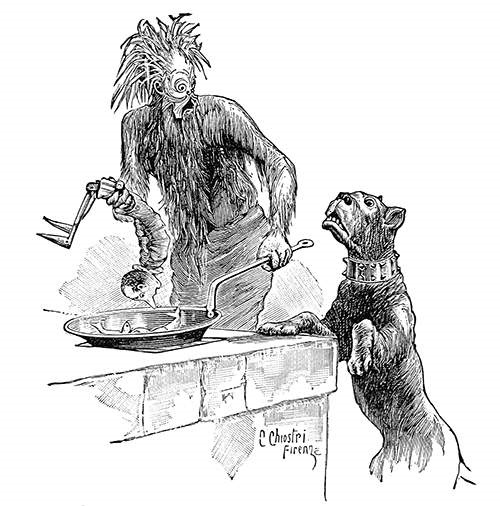
[Source: Carlo Chiostri/Adolfo Bongini/OldBookIllustrations.com]
Pinocchio is another classic Disney movie, and actually the second of Disney’s fully animated feature films. However, the story is adapted from The Adventures of Pinocchio by Italian writer C. Collodi, which is a much darker tale—and much longer! (It certainly wouldn't be able to keep a G rating.) In the original story of Pinocchio, a carpenter comes across a piece of wood that talks, and it scares him so much that he decides that his friend Gepetto should have it. Gepetto then takes the wood and carves his marionette, Pinocchio. In an odd turn of events, Gepetto is taken to jail which leaves the wooden boy to his own devices. It doesn’t take Pinocchio long to get into mischief, which includes killing a talking cricket (poor Jiminy), burning his feet off and begging for food. Thankfully, once Gepetto leaves prison, he is able to fix and feed the marionette. Gepetto even buys him an ABC book so that Pinocchio can eventually go to school and learn to behave like a real boy.
From this point on, Pinocchio undergoes a series of misadventures and is nearly killed several times. (Due to the fact that he's a wooden marionette he lives through these experiences, but we're still puzzled about how he can still consume food like a normal human being.) Some of his escapades include nearly getting used as firewood, being hanged from a tree by assassins, getting sentenced to four months in prison, being chained on a dog leash, having a fisherman attempt to eat him, getting turned into a donkey, being sold (still as a donkey) to have his skin turned into a drum head, getting tied to a stone and tossed into the sea (also still as a donkey) where he is swallowed by a giant shark. (He has a few more, but you should get the idea by now!) After reuniting with his father inside the whale, they escape and find their way back to land, although they're penniless and Gepetto is in poor health. (He was stuck in the monstrous shark for two years, and he survived by eating raw fish swallowed by the shark.) Pinocchio finally does a 180 and he works hard to support himself and his father, and he selflessly donates some of the money to help a fairy that had been watching over him. The following day, he wakes up to find that he has turned into a real boy! (The fairy was testing him, and he passed.) His room is also nicely furnished and a new set of clothes is waiting for him. Gepetto also had some of his youth restored and he was back to his carpentry work again, so at least this story does have a happy ending.
We hope you learned a little bit about the original fairy tales. How many of these stories were you familiar with? Were you surprised by any of them? Would you have liked the movies better if the adaptations were more faithful? Share your thoughts with us in the comments! We have a soft spot for Disney movies and Disney costumes, and we're curious to see what fairy tales you might add to your own library.
